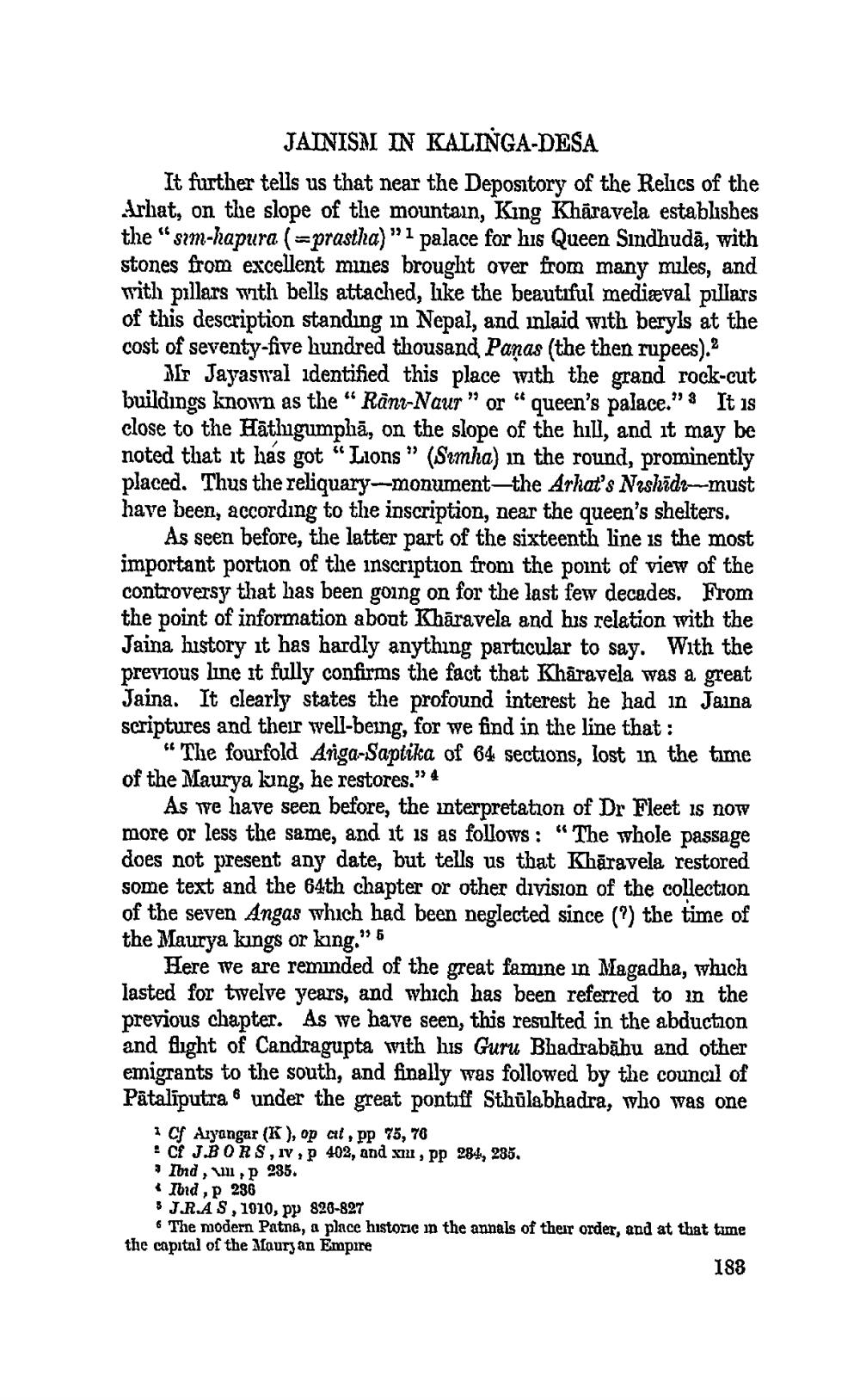________________ JAINISM IN KALINGA-DESA It further tells us that near the Depository of the Relics of the Arhat, on the slope of the mountain, King Kharavela establishes the "sem-hapura (=prastha)" 1 palace for his Queen Sindhuda, with stones from excellent mines brought over from many miles, and with pillars with bells attached, like the beautiful mediaeval pillars of this description standing in Nepal, and inlaid with beryls at the cost of seventy-five hundred thousand Panas (the then rupees). Mr Jayaswal identified this place with the grand rock-cut buildings known as the "Ranz-Naur" or " queen's palace." 3 It is close to the Hatlugumpha, on the slope of the hill, and it may be noted that it has got "Lions" (Semha) in the round, prominently placed. Thus the reliquary-monument-the Arhat's Neshidi---must have been, according to the inscription, near the queen's shelters. As seen before, the latter part of the sixteenth line is the most important portion of the inscription from the point of view of the controversy that has been going on for the last few decades. From the point of information about Kharavela and his relation with the Jaina history it has hardly anything particular to say. With the previous line it fully confirms the fact that Kharavela was a great Jaina. It clearly states the profound interest he had in Jaina scriptures and their well-being, for we find in the line that: "The fourfold Anga-Saptika of 64 sections, lost in the time of the Maurya king, he restores." 4 As we have seen before, the interpretation of Dr Fleet is now more or less the same, and it is as follows: "The whole passage does not present any date, but tells us that Kharavela restored some text and the 64th chapter or other division of the collection of the seven Angas which had been neglected since (*) the time of the Maurya kings or king." 5 Here we are reminded of the great famine in Magadha, which lasted for twelve years, and which has been referred to in the previous chapter. As we have seen, this resulted in the abduction and flight of Candragupta with his Guru Bhadrabahu and other emigrants to the south, and finally was followed by the council of Pataliputra & under the great pontiff Sthulabhadra, who was one 1 Cf Anyangar (K ), op aut, pp 75, 70 . Cf J.BORS,1,P 402, and XI, pp 284, 285. * Ibid, W p 295. Ibid, p 296 J.RAS, 1910, pp 820-827 6 The modern Patna, a place historic in the annals of their order, and at that time the capital of the Mauryan Empire 188




